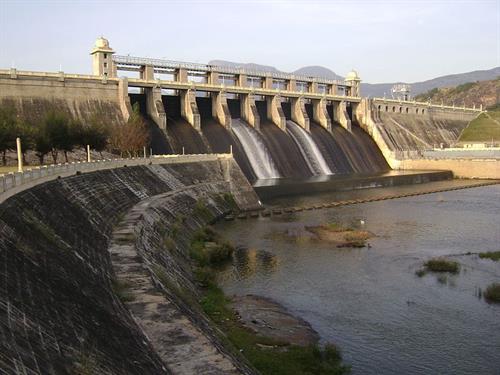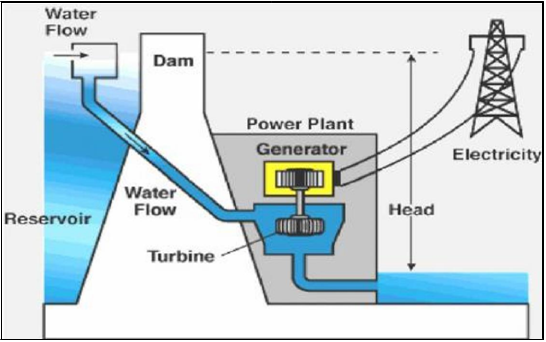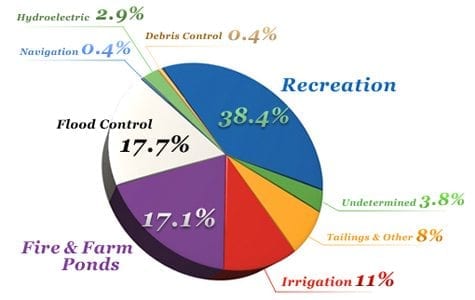
PUMPA - SMART LEARNING
எங்கள் ஆசிரியர்களுடன் 1-ஆன்-1 ஆலோசனை நேரத்தைப் பெறுங்கள். டாப்பர் ஆவதற்கு நாங்கள் பயிற்சி அளிப்போம்
Book Free DemoDams are large water-holding structures built across rivers to control water flow. Many dams have been built across the major rivers to act as reservoirs for river water. Dams ensure adequate water storage, and canal systems from the dams can transport large amounts of water over great distances.

Amaravati dam
The stored water flows downstream to generate electricity and transport water to long distances for irrigation. The Indira Gandhi Canal, for example, has brought greenery to large portions of Rajasthan.

Stored water of a dam generates electricity
However, due to poor water management, the benefits have mostly been concentrated in the hands of a few individuals. There is no equitable water distribution, and individuals living close to the source grow water-intensive crops like sugarcane and rice. In contrast, those living further downstream do not get any water.
Some examples of dams and canals in India are:
a. Bhakra Dam built on the river Sutlej in Punjab
b. Sardar Sarovar Dam was built on the river Narmada in Gujarat in the year \(1940\)
c. Tehri Dam built on the Ganga River, located in Tehri, Uttaranchal
d. Mettur Dam was built on the Cauveri river in Tamil Nadu is the oldest dam.
Advantages of dams:
i. Canal systems that originate from dams can transport large amounts of water over long distances, which helps increase agricultural output.
ii. Dams ensure a constant supply of water in the surrounding area.
iii. Water flowing from a great height is utilised to generate electricity.

Problems associated with Dam construction:
i. Social problems: Dam construction creates the displacement of a large number of peasants and tribals without proper compensation or rehabilitation. These social problems result in protests such as the Narmada Bachao Andolan ("Save the Narmada Movement"). The people who were displaced by the construction of the Tawa Dam in the \(1970\)s are still struggling for the benefits they promised.
ii. Economic problems: Dam construction is an expensive project that involves spending a significant amount of public funds. Some people believe that such expenditure does not generate proportionate benefits. Others think that, no progress can be made without dams because they manage the water resource more efficiently than any other method.
iii. Environmental problems: Dam construction results in deforestation, biodiversity loss, and tribals' displacement. The government has not provided enough compensation to these tribals.
Reference:
https://commons.wikimedia.org/wiki/File:Amaravathi_Dam.jpg
https://commons.wikimedia.org/wiki/File:Hydro-Power-Plant.png